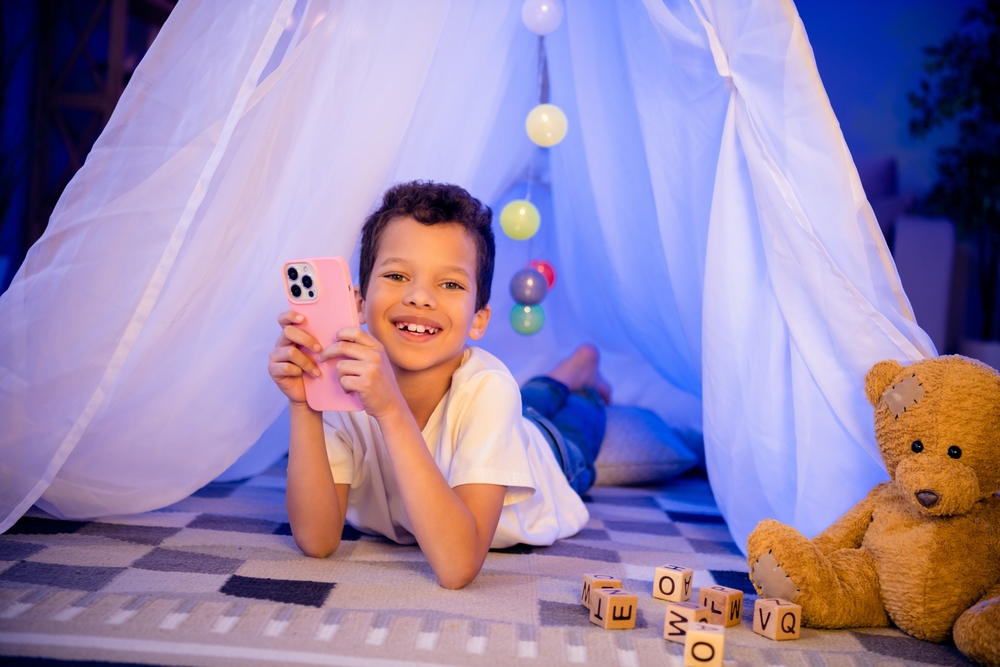Sleepovers – a magical word that conjures images of giggling friends, movie marathons, and whispered secrets under blankets. But for parents, the excitement of a child’s upcoming sleepover can be laced with worry. Sending your child to a friend’s house or hosting one on your own requires some planning to ensure a safe and enjoyable experience for everyone involved. Here’s a guide to help you navigate sleepovers, from pre-sleepover communication with your child to tips for hosting parents.
Laying the Groundwork: Pre-Sleepover Communication with Your Child
Open communication is critical to a successful sleepover. Here’s what to discuss with your child before the big night:
- Setting Expectations: Talk about appropriate behavior at the sleepover. This includes respecting the host parents’ house rules, following established bedtimes, and maintaining reasonable screen time.
- The Power of “No”: Discuss body safety and the importance of saying “no” if someone touches them in a way that makes them uncomfortable. Explain the concept of “safe touches” from familiar adults and “unsafe touches” in private areas.
- Open Communication Channels: Encourage your child to communicate openly with the host parents if they need anything, feel uncomfortable, or want to come home. Please ensure they’ll be available to pick them up if needed.
- Emergency Contact Information: Ensure your child knows the host parents’ contact information and knows your phone number. Consider writing it down on paper and tucking it safely in their bag.
- Dietary Needs: If your child has allergies or dietary restrictions, discuss these with the host parents beforehand. Offer to provide snacks or meals that cater to their needs or ensure they know what options will be available at the sleepover.
Packing for Fun and Confidence: Preparing Your Child
- Essentials Bag: Help your child pack a bag with all the essentials – pajamas, toothbrushes, toiletries, and any medications they might need.
- Favorite Comfort Item: Encourage them to bring a favorite stuffed animal or blanket for security and familiarity in an unfamiliar environment.
- Change of Clothes: Pack extra clothes, including underwear and socks, in case of spills or accidents.
- Contact Information: Include a note with your contact information tucked away safely in their bag, just in case.
Respecting Boundaries and Body Safety
Talking openly about body safety is crucial before any sleepover. Here are some key points to discuss:
- Empowerment: Let your child know they can feel safe and respected. Encourage them to tell you or another trusted adult if something feels wrong during the sleepover.
- Open Communication: Reiterate the importance of open communication with the host parents and yourself. Let them know they can come to you with any concerns, big or small.
Setting Expectations for a Smooth Sleepover Experience
- Screen Time Limits: Discuss screen time limitations with the host parents beforehand. This helps ensure consistency and prevents arguments or meltdowns over excessive screen time.
- Bedtime Routine: Talk to your child about maintaining a reasonable bedtime, even if it’s slightly later than their usual routine. A consistent sleep schedule helps ensure everyone gets a good night’s rest.
- Healthy Snacks: If you have concerns about sugary treats being the only food option, pack some healthy snacks your child can enjoy. This could include fruits, vegetables, or whole-grain crackers.
The Role of the Hosting Parent: Ensuring a Safe and Fun Environment
For parents hosting a sleepover:
- Clear Communication: Discuss expectations and house rules with your child and the visiting children. This includes appropriate behavior, screen time limits, and bedtime routines.
- Supervision: While sleepovers can offer some independence, it’s important to provide occasional supervision, especially for younger children. Check in periodically to ensure everyone is safe and having fun.
- Emergency Plan: Have a plan in place in case of accidents or emergencies. This includes knowing where a first-aid kit is located, having emergency contact information readily available, and knowing how to contact parents.
- Dietary Needs: Be mindful of the visiting children’s allergies or dietary restrictions. Plan snacks and meals that everyone can enjoy, or ask parents of visiting children to provide specific foods if needed.
- Open Communication: Encourage open communication and create a safe space for children to voice concerns. Let them know they can come to you if they need anything.
By openly communicating with your child and offering clear expectations, you can ensure a sleepover filled with fun and memories.
This story was created using AI technology.

















